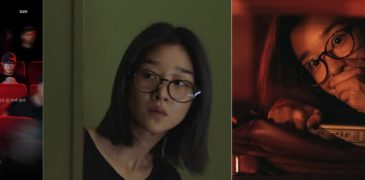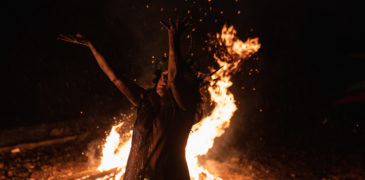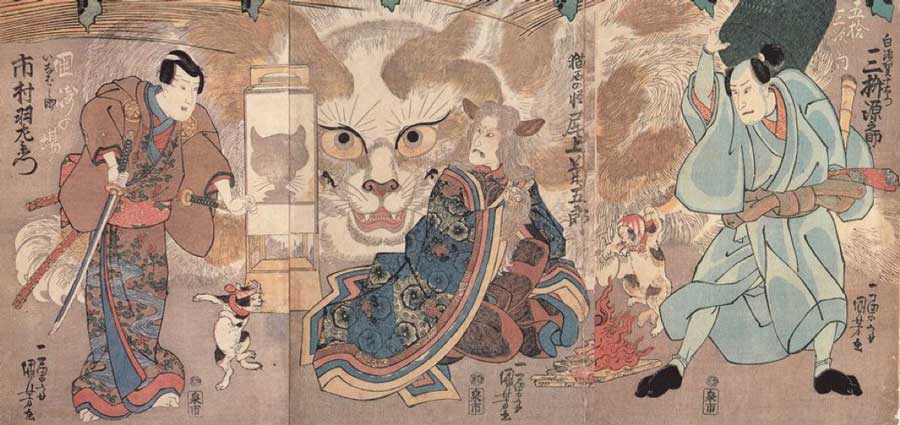
The Bakeneko (化け猫, “changed cat”) is a mischievous yōkai in Japanese culture that is one of the more commonly found ghosts in Japan. A Bakeneko is a common house cat that during their life transforms into a ghostly yōkai creature. It’s quite often believed in Japan that the older a cat becomes, the more spiritual it becomes, often turning into a spirit and possessing many new powers. The Bakeneko are not generally dangerous to good people, but are quite strange creatures, and thrive on confusion and trickery. As with foxes in Japan, they are believed to generally be prankster spirits that take fun in misfortune.
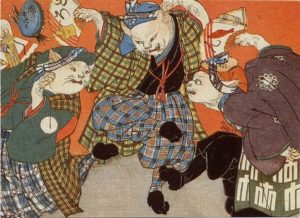
Abilities of the Bakeneko are quite numerous, and the only difference between them is the abilities they learn during their life. Bakeneko are said to learn to speak human languages and can all walk on their hind legs, while wearing napkins or cloths on their head. They swagger around and mimic people, dancing in happiness because of misfortune incited, while causing mayhem by confusing others, generally just making life a living hell for their owners. Bakeneko grow to twice the size of a house cat, and some can even grow to human size. Some older Bakeneo also have another ability, quite chilling and frightening to say the least of it, of being able to completely mimic dead people in voice, body shape and size according to the Kabuki named “Ume no Haru Gojūsantsugi” (梅初春五十三駅) where a Bakeneko assumed the role of an old woman. Acting as if it was her, it took her meals and causing chaos while the old woman was dead and rotting underneath the floorboards.
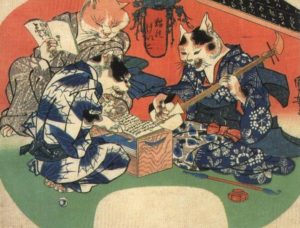
While Bakeneko are generally harmless, they do curse homes and cause much anguish and misfortune – even more so for cruel owners or anybody bringing harm to cats. Often seen as protectors of other cats, many stories of Bakeneko center around them cursing or sometimes even killing abusive cat owners, eating their family or their friends as revenge while taking the places of these consumed relatives/friends to plot even worse. One such story even accounts of a Bakeneko eating the concubine of a powerful lord, shapeshifting into her and infiltrating the palace to unleash their conniving trickery. Bakeneko are also commonly suck the fish oil from lamps, and can start random small fires around homes for even more disorder. A Bakeneko who is believed to be more wickedly inclined can be slain in both human and cat form.
Interestingly, Bakeneko are most commonly confused with Nekomata, our next spirit in this article, and another ghostly cat-like spirit which is generally believed to be much more vicious. Nekomata (猫また, and later written as 猫又, 猫股, 猫胯) are cat spirits typically found to live in the mountains and grow even larger than the Bakeneko while retaining most of their abilities. Nekomata are generally more hateful towards humans as a firm animosity. The difference between Bakeneko and Nekomata are quite simple however, but being able to differentiate between the two might save your life. The Nekomata have two long, split tails and are believed to be more skilled in their spiritual powers while also better at speaking human languages. Bakeneko, however, have a short tail as common of most house cats. Because of the Nekomata, many people in Japan practised the painless removal of tails from kittens, to keep their powers from growing with their tails, as it was believed that the longer a tail is, the more power it contains. It was generally believed that cats with long tails used them to bewitch and enslave humans in their living lives, and charged their spiritual powers by staring and gazing at the moon.
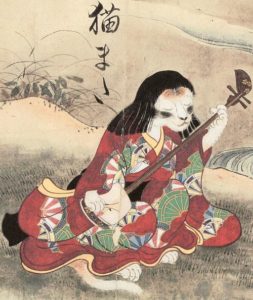
Nekomata also have better control over their shapeshifting abilities. Anything Bakeneko can do, Nekomata can do better! It is said that between your own mother and a Nekomata, you would never know the difference unless you peeked under their clothing and saw the two hidden tails. They are much harder to kill in any form compared to the Bakeneko, and they also kill indiscriminately. Stray animals, children, and humans are all at danger of being attacked and eaten by a savage Nekomata. Nekomata are much more evil and thought to perhaps be a consequence of having been abused in their living life. The more abused a cat was, the more power it will gain as a Nekomata.
Cats are often associated with death in Japan, and this particular spirit is often blamed. Far darker and malevolent than most Bakeneko, the Nekomata is said to have powers of necromancy, and upon raising the dead, will control them with ritualistic dances as they use their paws and tails to control the corpse puppets. Can you say Nasty Necromancer Nekomata 10 times fast?
Bakeneko and Nekomata are enduring Japanese spirits closely tied to the popularity of cats. They are prevalent throughout pop culture, mostly in anime and manga where they take a more benevolent and protecting form. It is said that the “Lucky Cat”, the Maneki-Neko, is even a Bakeneko, and that it blesses those who are generous to it, which is why you’ll find many keychain, statues, posters, and toys of the Maneki-Neko all over shops and in homes of Japan.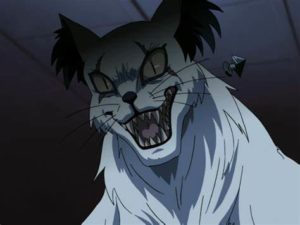
More Urban Legends:
Warning: Do Not Play (2019) Film Review – All About Showing, Not Telling
Warning: Do Not Play is a South-Korean horror that can proudly stand among the great Asian movies from this decade with a focus on filmmaking, ‘One Cut Of The Dead‘ and…
The Ritual (2017) Film Analysis – The Demonization of Paganism
Until c.1080 CE, the Temple of Uppsala stood tall and proud outside Gamla Uppsala, Sweden. The temple served as a place of worship and community dedicated to pagan deities such…
Mandrake (2022) Film Review – Eerie Folk Horror
“Probation officer Cathy Madden is given the task of rehabilitating notorious killer ‘Bloody’ Mary Laidlaw back into society after she was imprisoned 20 years earlier for butchering her husband with…
Legend Of The Mountain (1979) Film Review – Triumphant execution of a typical Folktale-ish Narrative
Shih Chun is Ho Yun-Qing, an intelligent student who fails his imperial examination and, after failing to find a respectable job well, decides to become a manuscript copyist. His minimal…
